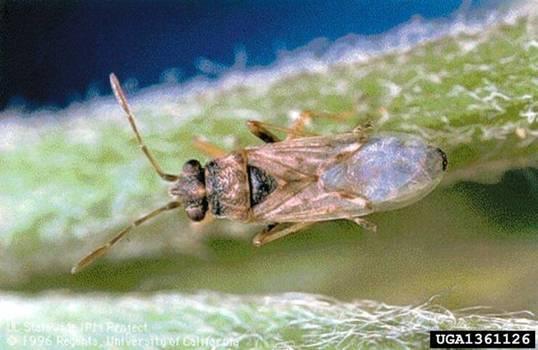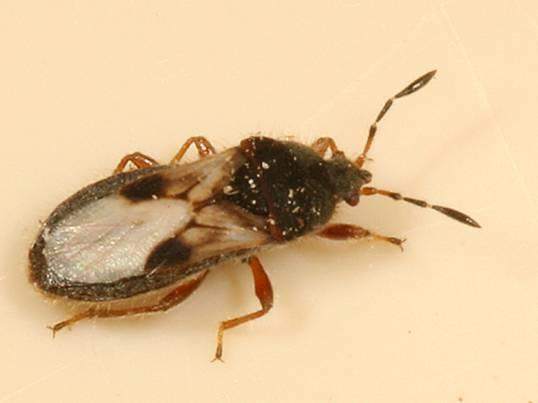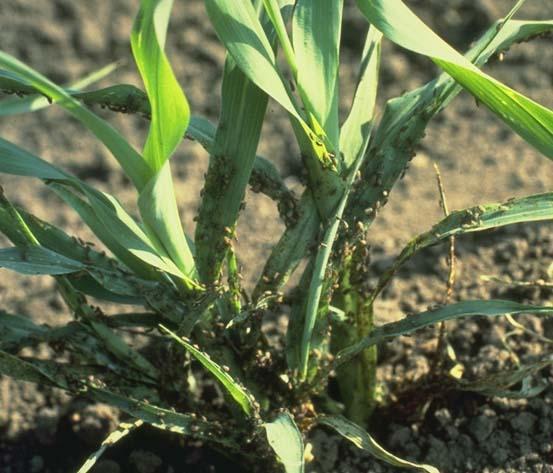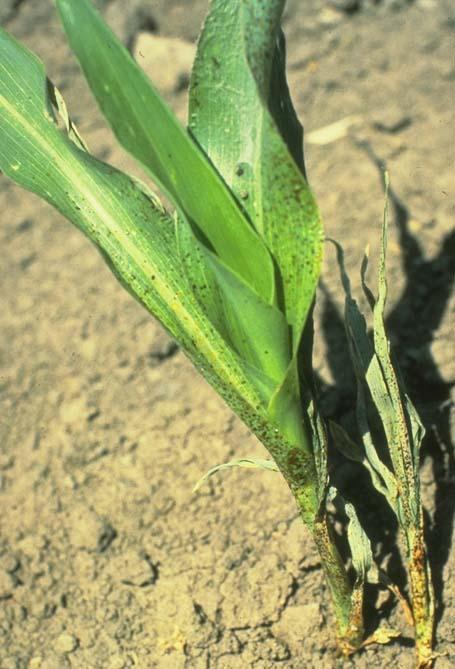Sorghum Insects
False chinch bug, Nysius raphanus.

Adult false chinch bug.

True chinch bug adult, for comparison.

False chinch bugs on sorghum.

False chinch bug damage to sorghum.
False chinch bugs are similar in appearance to chinch bugs, but smaller in size. However, false chinch bug nymphs are grayish to brown, sometimes tinged with yellow, rather than bright orange. Adults are gray to brown with transparent wings, whereas chinch bug adults are black with white wings with a black triangle. False chinch bugs appear to spend very little time on sorghum plants, but when populations are abundant, stand reductions can occur. False chinch bug adults can also swarm into sorghum fields later in the season. Infestations averaging 140 bugs per panicle during milk stage are considered damaging as they will result in empty seed capsules. However, swarms of adults usually are very spotty and unless several spots are present, it is usually hard to justify a field-wide treatment. False chinch bugs can occasionally become abundant when conditions favor their survival on various weed hosts, particularly wild mustards. They have a wide host range and as many as four generations per year. Fields planted no-till into wheat stubble where weed control was delayed until just before planting and fields bordering weedy areas are most at risk.
More detailed information on false chinch bug biology can be found in FSRE publication MF-3047:False Chinch Bug.
Please refer to the most recent version of the Sorghum Insect Management Guide for specific control recommendations.
Page last updated on 10/31/2013 by J.P. Michaud.